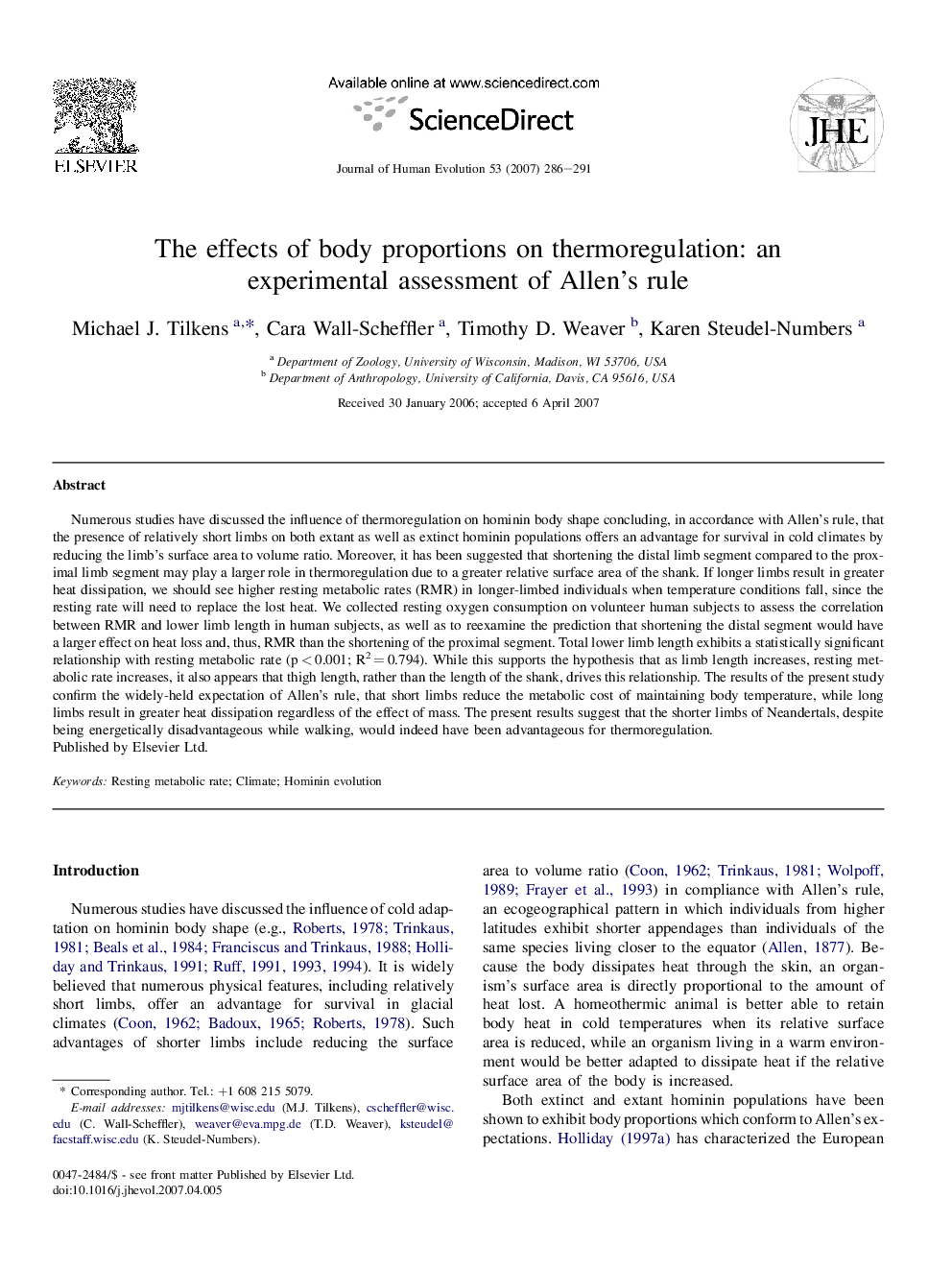| کد مقاله | کد نشریه | سال انتشار | مقاله انگلیسی | نسخه تمام متن |
|---|---|---|---|---|
| 4557311 | 1329543 | 2007 | 6 صفحه PDF | دانلود رایگان |

Numerous studies have discussed the influence of thermoregulation on hominin body shape concluding, in accordance with Allen's rule, that the presence of relatively short limbs on both extant as well as extinct hominin populations offers an advantage for survival in cold climates by reducing the limb's surface area to volume ratio. Moreover, it has been suggested that shortening the distal limb segment compared to the proximal limb segment may play a larger role in thermoregulation due to a greater relative surface area of the shank. If longer limbs result in greater heat dissipation, we should see higher resting metabolic rates (RMR) in longer-limbed individuals when temperature conditions fall, since the resting rate will need to replace the lost heat. We collected resting oxygen consumption on volunteer human subjects to assess the correlation between RMR and lower limb length in human subjects, as well as to reexamine the prediction that shortening the distal segment would have a larger effect on heat loss and, thus, RMR than the shortening of the proximal segment. Total lower limb length exhibits a statistically significant relationship with resting metabolic rate (p < 0.001; R2 = 0.794). While this supports the hypothesis that as limb length increases, resting metabolic rate increases, it also appears that thigh length, rather than the length of the shank, drives this relationship. The results of the present study confirm the widely-held expectation of Allen's rule, that short limbs reduce the metabolic cost of maintaining body temperature, while long limbs result in greater heat dissipation regardless of the effect of mass. The present results suggest that the shorter limbs of Neandertals, despite being energetically disadvantageous while walking, would indeed have been advantageous for thermoregulation.
Journal: Journal of Human Evolution - Volume 53, Issue 3, September 2007, Pages 286–291